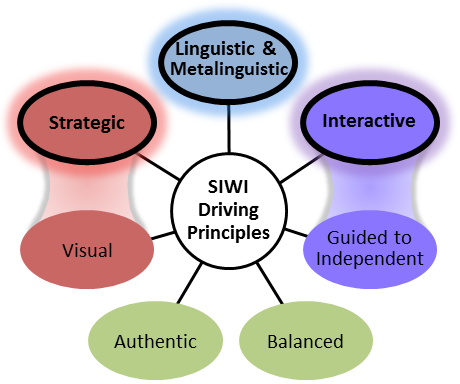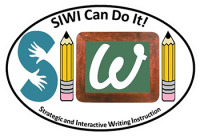Principles

Strategic and Interactive Writing Instruction (SIWI) is comprised of three main principles: (1) strategic instruction rooted in cognitive theories of composing, (2) interactive instruction based on sociocultural theories of teaching and learning, and (3) metalinguistic knowledge and linguistic competence drawn from language acquisition theory. In addition to these three principles, there are four other subprinciples driving SIWI.
Driving Principles
Roll over the cards to learn more about each principle of SIWI.
Strategic
Strategic: Explicitly teaching the processes of expert writers to students. This may involve the use of word or symbol procedural facilitators.
Interactive
Interactive: Students and the teacher share ideas, build on each other’s contributions, and cooperatively determine writing actions when engaged in guided writing.
Authentic
Authentic: The writing activity has a real purpose and audience.
Metalinguistic Knowledge and Linguistic Competence
Metalinguistic & Linguistic Competence: Two routes students have in developing language—learning it explicitly and acquiring it. There are opportunities for both in every SIWI lesson.
Visual Scaffolds
Visual Scaffolds: Visually representing the writing processes, strategies or skills students are in the process of learning.
Guided to Independent
Guided to Independent: Different kinds of classroom writing formats are incorporated— from most supported (i.e., group guided writing), to moderately supported (i.e., small group or paired writing), to least supported environment (i.e., independent writing).
Balanced
Balanced: Attention is given to word-, sentence-, and discourse-level writing skills.
